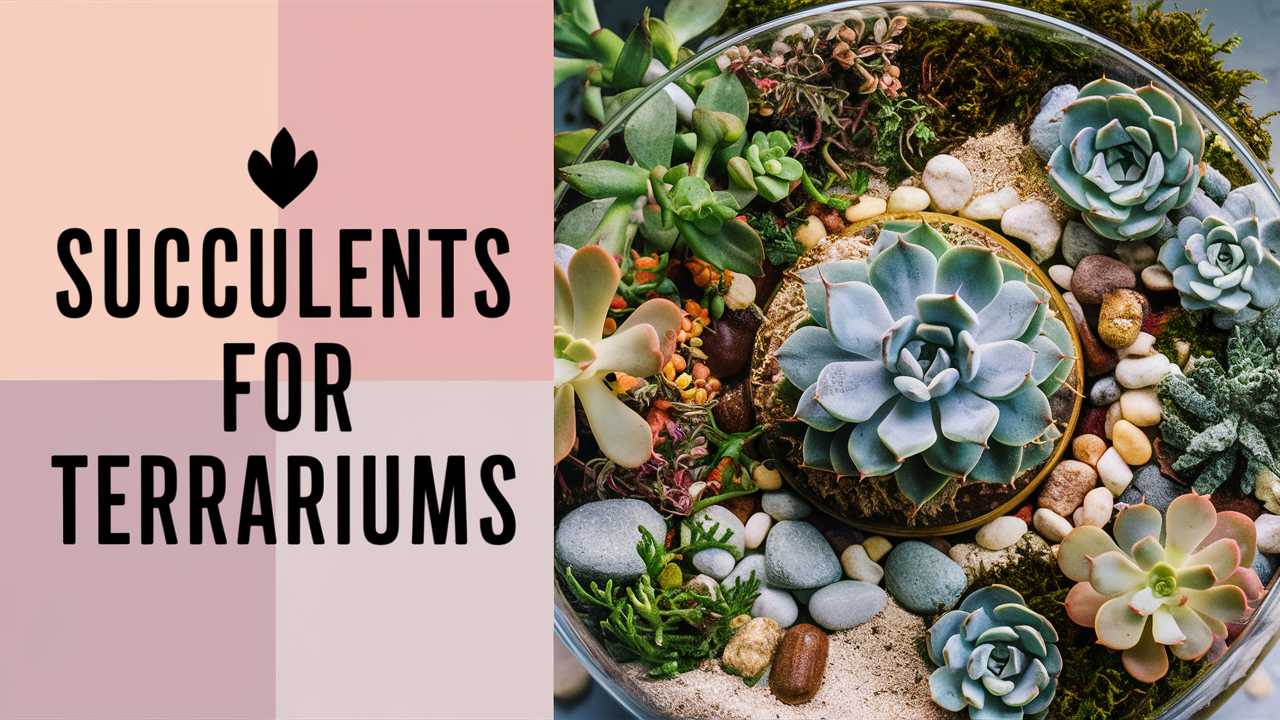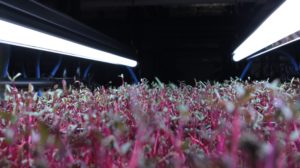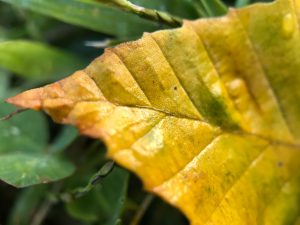Below, we’ll explore a variety of succulent species that are ideal for terrarium environments, examining their unique characteristics and how they can enhance your indoor garden.
Zebra Haworthia (Haworthia fasciata)
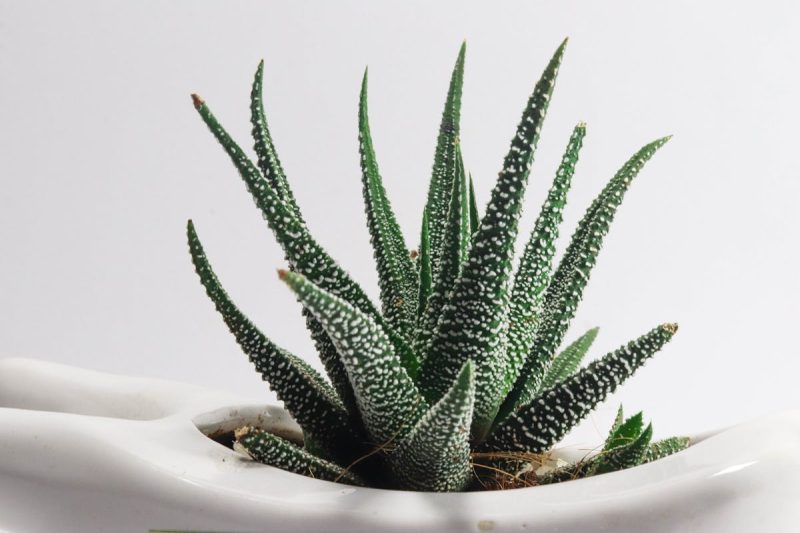
The Zebra Haworthia is a striking succulent known for its bold white stripes that contrast beautifully against its dark green leaves. This plant has a rosette shape, growing slowly to a height of about 4-5 inches, which makes it perfect for small spaces. Haworthia fasciata prefers indirect sunlight, making it ideal for terrarium environments where direct light may be limited.
In terms of care, this succulent requires well-draining soil and a light watering schedule, allowing the soil to dry out completely between waterings. Its hardy nature and low maintenance needs mean that even novice gardeners can successfully incorporate it into their terrarium designs. The Zebra Haworthia can add a touch of elegance with its unique textural appeal and will easily thrive alongside other succulent varieties.
String of Pearls (Senecio rowleyanus)
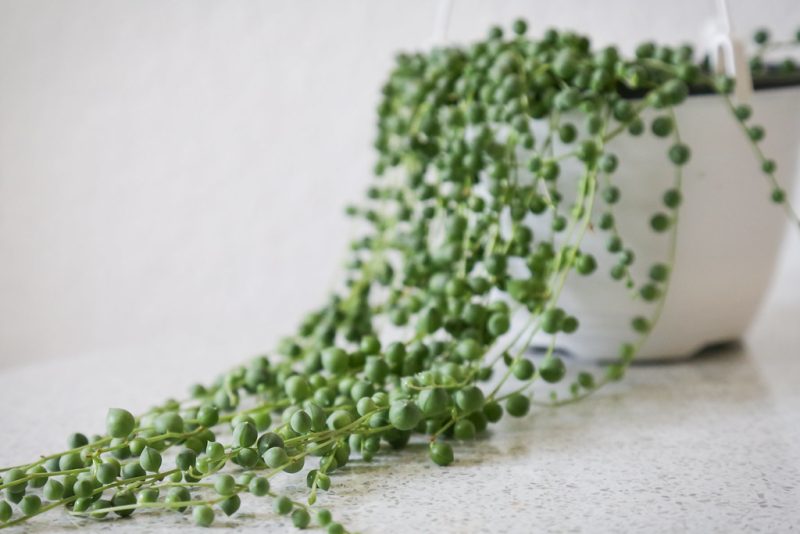
Senecio rowleyanus, commonly known as String of Pearls, is a delightful trailing succulent that produces distinctive green, bead-like leaves that cascade down like miniature strands of pearls. This unique growth habit makes it an excellent choice for terrariums, especially when incorporated on elevated surfaces or hanging from terrarium walls.
This succulent prefers bright, indirect light to thrive and, like many succulents, it is crucial to ensure that its roots do not sit in water. Regular watering, letting the soil dry completely between cycles, will prevent rot. The String of Pearls not only serves as an eye-catching centerpiece due to its dramatic trailing vines but also adds an element of movement and depth to your terrarium landscape.
Burro’s Tail (Sedum morganianum)

Burro’s Tail is another excellent selection for terrariums, renowned for its trailing habit characterized by thick, fleshy leaves that form cascading drapes. This succulent can contribute a lush, green contrast to the more structured elements of your terrarium. It’s perfect for achieving a verdant backdrop or creating a layered effect alongside other succulents.
Burro’s Tail thrives in bright, indirect sunlight and enjoys infrequent watering—just enough to allow the soil to dry between sessions. One important thing to note is that this succulent can be quite sensitive; when handling it, the leaves can easily drop off. However, if they do, you can propagate the dropped leaves, adding to your collection or starting new plants.
Leatherpetal (Graptopetalum paraguayense)
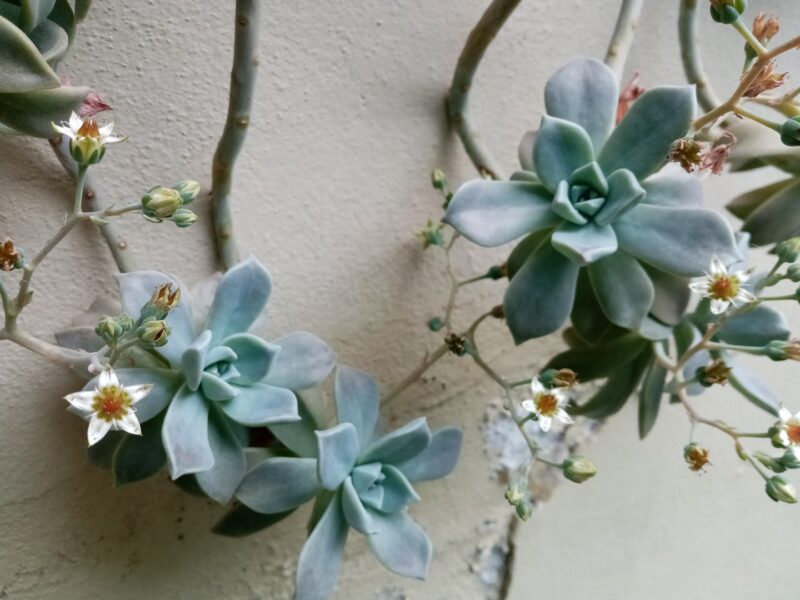
Also known as Ghost Plant, the Leatherpetal features stunning rosettes of fleshy, pale blue-green leaves with edges tinged in pink. Its unique coloration offers an ethereal touch to any terrarium setup. The leaves can easily drop off and can be propagated in soil or water, making this succulent a versatile addition to your garden.
Graptopetalum paraguayense thrives in bright sunlight but can also tolerate partial shade. It prefers a well-draining soil mix and infrequent watering—just enough to keep it hydrated without over-saturating the roots. Its attractive form and ease of care make it not only a desirable option for your terrarium but also a great conversation starter.
Pencil Cactus (Euphorbia tirucalli)
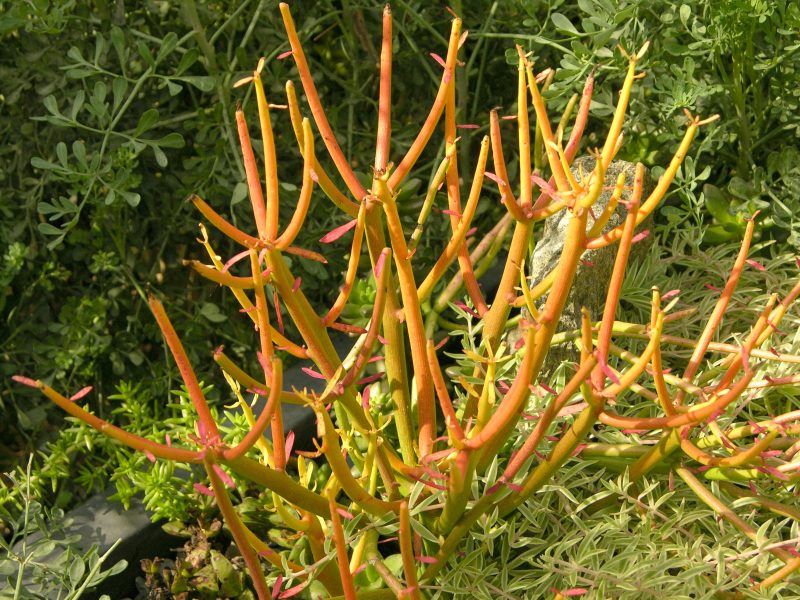
The Pencil Cactus is a visually striking succulent known for its slender, upright pencil-thin stems that can reach impressive heights. Although it’s technically a euphorbia rather than a true cactus, its architectural shape introduces vertical interest and sculptural quality to your terrarium design.
While caring for the Pencil Cactus, it’s essential to provide bright light conditions and a well-draining potting mix. This succulent has unique watering needs as it requires thorough soaking during the growing season and minimal watering in the winter. However, be cautious: its milky sap can be irritating if it comes into contact with your skin. This dramatic succulent, with its fiery coloration and unique form, makes a bold statement in terrariums.
Moon Cactus (Gymnocalycium)
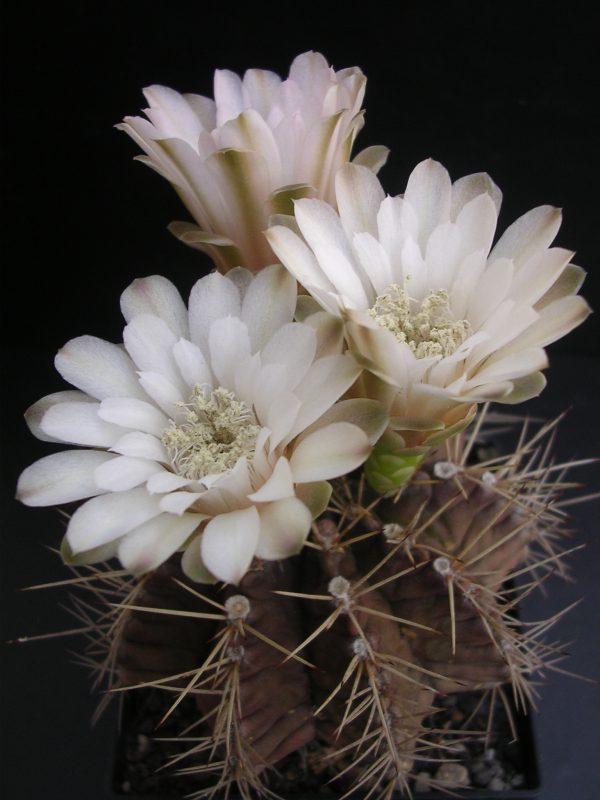
Adding a brightly colored touch to your terrarium, the Moon Cactus is a delightful hybrid that features a vibrant top grafted onto a green base. The colorful stem, typically red, pink, or yellow, is aesthetically pleasing and sets the Moon Cactus apart from other succulents. This cactus variety prefers bright, indirect sunlight and can flourish in various container sizes, making it an adaptable option for terrarium cultivation.
Caring for the Moon Cactus requires well-draining soil and a careful watering approach, allowing the soil to dry out before re-watering. Known for their low maintenance and ease of care, Moon Cacti often thrive in diverse environments, making them suitable for gifts or a playful addition to your home.
Zwartkop (Aeonium zwartkop)

Known for its dramatic dark coloring, Zwartkop adds visual intrigue with its deep maroon to nearly black rosettes. This succulent prefers a well-lit environment and can handle direct sunlight, which enhances its vivid color. Because of its larger size (up to 12 inches), it’s best positioned as a focal point or anchor in your terrarium layout.
Aeonium zwartkop requires moderate watering—ensuring that it has the proper drainage to prevent root rot. Its unique shape and captivating hue make it an eye-catching plant that stands out wonderfully when paired with lighter-hued succulents, which can create an appealing contrast.
Gollum Jade (Crassula ovata ‘Gollum’)
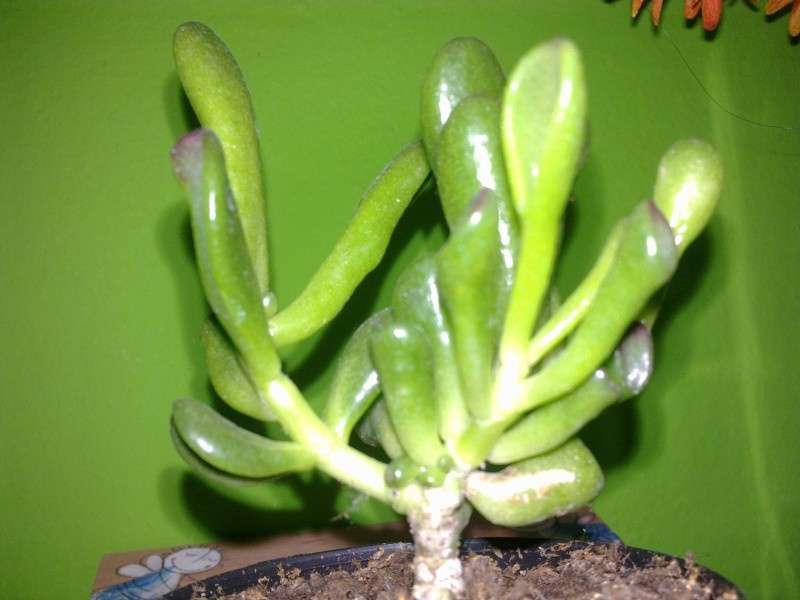
Gollum Jade brings a whimsical touch to your terrarium with its tubular leaves that resemble elongated fingers. This variety of Crassula ovata is not only visually intriguing but also relatively easy to care for, making it suitable for beginners and experts alike. The Gollum Jade produces vibrant red margins on its leaves when exposed to ample sunlight, adding a pop of color alongside its unique shape.
For optimal growth, provide this succulent with bright, indirect light and allow the soil to dry out between watering. As a resilient plant, Gollum Jade can adapt to various conditions, but be mindful of overwatering. This quirky succulent can be a perfect conversation piece while also providing companionship to other plants in your terrarium.
Graptopetalum mendozae
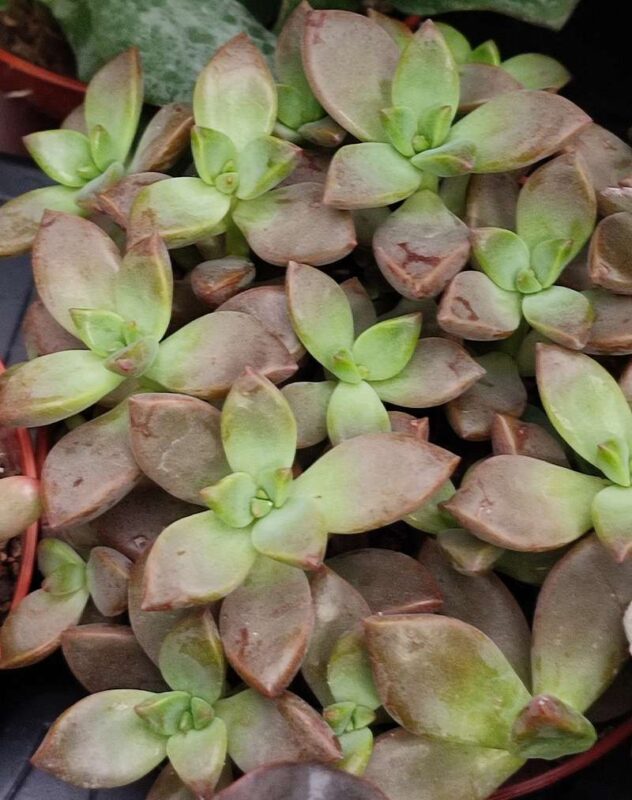
This succulent is an enchanting choice for terrarium enthusiasts, featuring compact rosettes of thick, silvery-green leaves. Graptopetalum mendozae is an excellent space-saver and can thrive in confined areas thanks to its slow growth rate. The coloration can shift with changing light conditions, offering versatile aesthetics throughout the seasons.
Ideal for bright, indirect sunlight, this succulent enjoys well-draining soil and requires minimal watering. The Graptopetalum’s delicate appearance adds charm to your terrarium, and its easy propagation method through leaf cuttings allows you to expand your succulent collection effortlessly.
Panda Plant (Kalanchoe tomentosa)
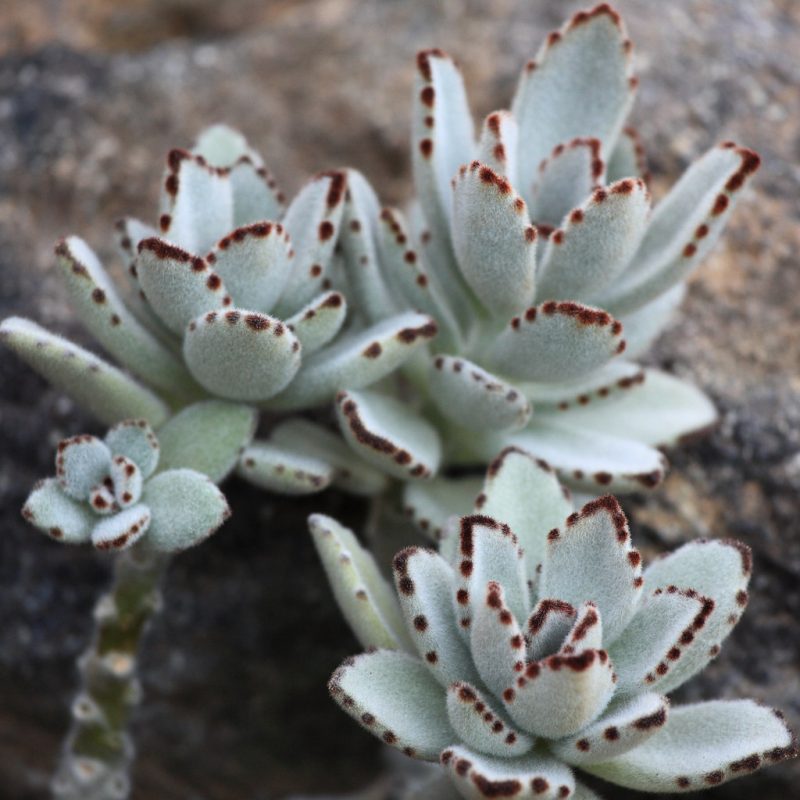
The Panda Plant is celebrated for its fuzzy leaves, which are trending for their texture and visual appeal. The silvery-gray leaves are adorned with distinctive dark margins, giving this succulent a unique appearance that can soften the overall look of your terrarium.
Kalanchoe tomentosa prefers bright, indirect sunlight and requires minimal watering—allowing the soil to dry out completely between watering sessions. With its resilience and intriguing texture, the Panda Plant pairs beautifully with other succulents while adding an appealing layered look to your arrangement.
Coppertone Stonecrop (Sedum nussbaumerianum)
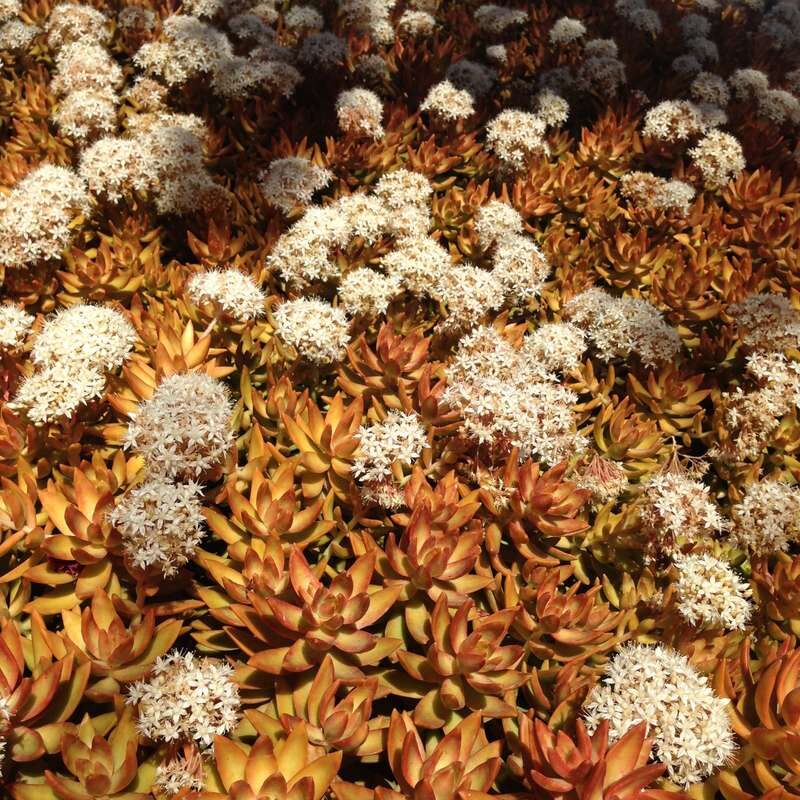
With rich golden-yellow to copper tones, Coppertone Stonecrop is a standout addition to any terrarium. This succulent’s dense foliage creates a plush look that contrasts beautifully with the various textures of other plants. It thrives in bright light and can tolerate some direct sunlight, though it’s best placed in a location with filtered light to maintain its vibrant color.
Providing well-draining soil is essential to prevent root rot, and this succulent does well with infrequent watering, especially during its dormant period. The warm hues of Sedum nussbaumerianum can create a stunning autumn-inspired theme for your terrarium and offers resilient beauty year-round.
Perle von Nurnberg (Echeveria ‘Perle von Nurnberg’)
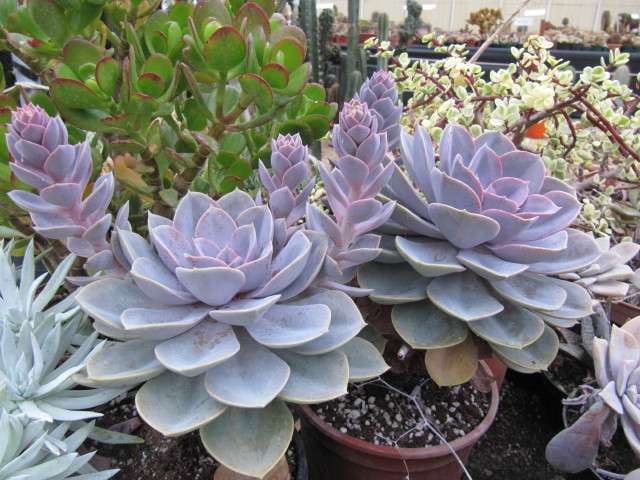
The Perle von Nurnberg is a captivating Echeveria known for its stunning lavender-toned leaves and elegant rosettes. This succulent can serve as a focal point in a terrarium design, effortlessly attracting attention with its unique coloring. Ideal for bright, indirect sunlight, this Echeveria flourishes when given light without direct sunburn.
Ensure well-draining soil to prevent root rot and stick to a moderate watering schedule, allowing the topsoil to dry out between waterings. The Perle von Nurnberg’s beauty and adaptability make it a cherished addition to any terrarium journey.
Amethyst Grape (Graptopetalum amethystinum)
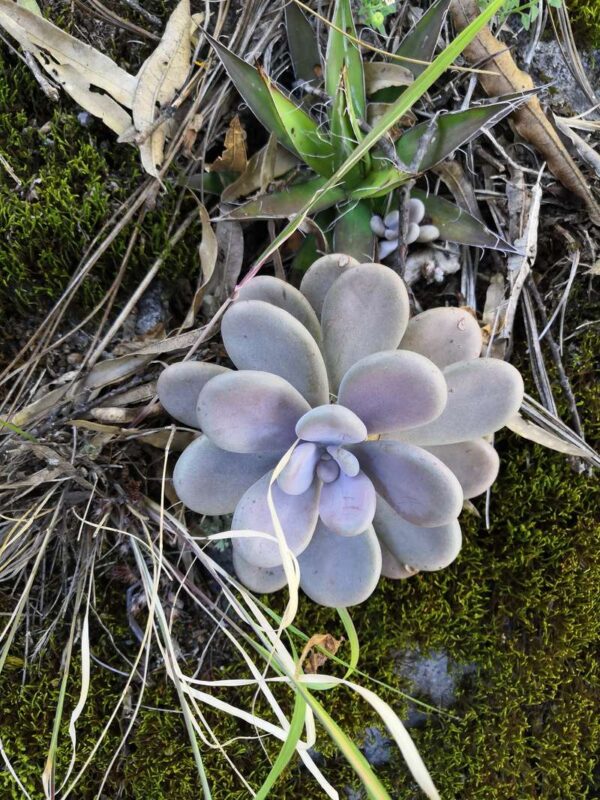
Amethyst Grape is another charming addition to any terrarium arrangement, featuring rosettes of plump, bluish-gray leaves that often blush pink in the right conditions. This succulent thrives in well-draining soil with minimal watering, preferring a bright environment.
Known for its hardiness, Graptopetalum amethystinum can withstand a variety of conditions, making it a perfect fit for terrarium novices. This plant encourages creativity and aesthetic exploration, allowing you to design your miniature ecosystem in a way that captures your unique style.
Kiwi Aeonium (Aeonium ‘Kiwi’)

The Kiwi Aeonium stands out with its vibrant green and yellow leaves, making a bold statement in any terrarium. The contrasting colors bring a playful, lively touch to terrarium designs. This succulent prefers bright, indirect light and can tolerate some direct sunlight.
In terms of care, it requires well-draining soil and moderate watering. Ensuring that the soil dries out leads to optimal growth and prevents root rot. The distinctive appearance of the Kiwi Aeonium offers ample opportunity to enhance your unique terrarium concept.
Anacampseros Sunrise

The vibrant hues of Anacampseros Sunrise make this succulent a delightful addition to your terrarium. With its thick, fleshy leaves that can display shades of green, yellow, and even red when exposed to adequate light, it brings dynamic life to the arrangement. This succulent is relatively low-maintenance, preferring well-draining soil and a bright light environment.
Anacampseros enjoys infrequent watering, particularly in winter, making it an ideal candidate for novice plant parents. This adaptable succulent will add cheerful colors and charm while cohabitating harmoniously with other plants in your terrarium scenery.
Elephant Bush (Portulacaria afra)
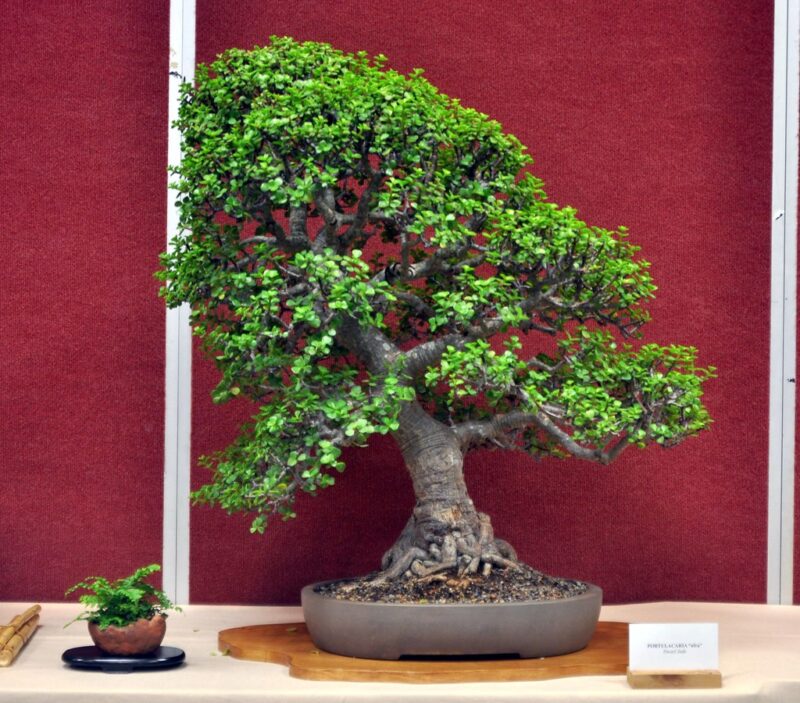
The Elephant Bush is a wonderfully resilient succulent characterized by its rich green foliage that can develop a bushy appearance over time. This plant thrives in bright light but can tolerate some shade, making it adaptable to a variety of terrarium settings.
Care involves providing well-draining soil and an infrequent watering schedule, allowing the plant to dry out between waterings. Its unique structure and lush foliage not only contribute to the beauty of the terrarium but also enrich the overall ecosystem by providing additional breathing space for your plant companions.
Echeveria pulidonis
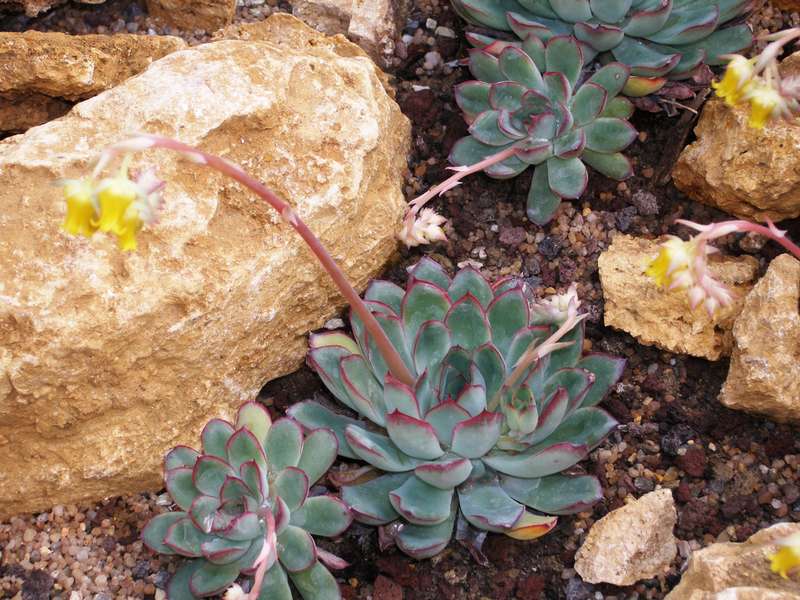
Another stunning Echeveria variety, Echeveria pulidonis, features attractive silver-blue foliage that appears almost waxy. With its rosette shape, it can add a delightful visual element while remaining compact enough for small terrariums. This succulent prefers bright, indirect light and requires careful watering.
It’s important to allow the soil to dry out completely between waterings to maintain optimal health. Echeveria pulidonis’ striking look makes it an appealing candidate for mixing with other succulents, contributing to a complex and visually stimulating terrarium.
Aloe juvenna

Aloe juvenna, also known as the Tiger Tooth Aloe, features serrated leaf edges that provide an unexpected texture and shape. This succulent is well-suited to terrarium life with its relatively compact growth, growing to around 12 inches tall. It thrives best in bright, indirect light and appreciates well-draining soil.
Watering should be moderate, following the general rule of allowing soil to dry out between waterings. The unique form of Aloe juvenna adds architectural interest and a touch of originality to your terrarium, making it memorable and delightful.
Haworthia aristata
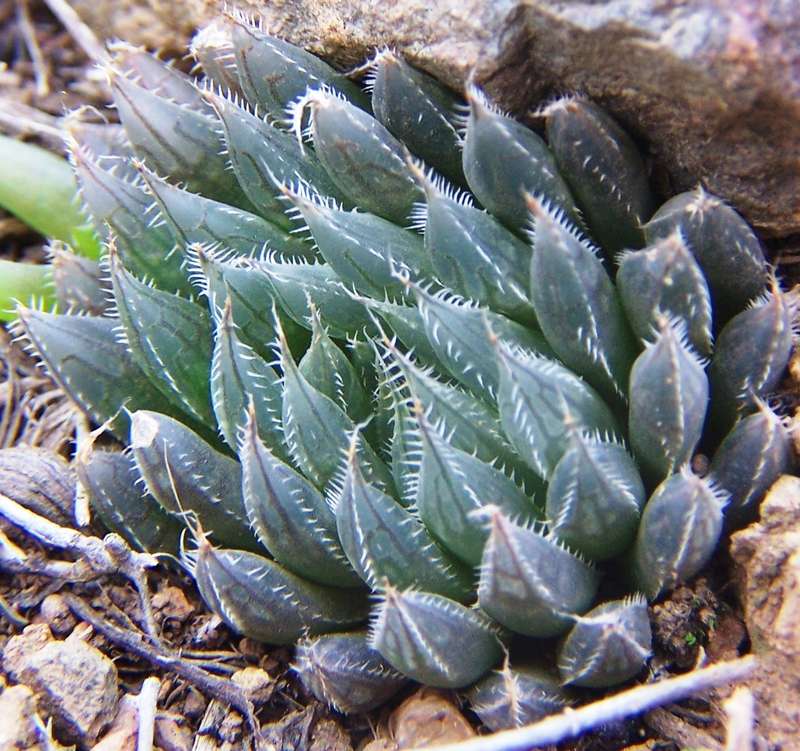
Haworthia aristata, commonly known as the Star Cactus, exhibits rosette-shaped growth with thick, dark green leaves adorned with striking white bumps. This succulent brings a unique textural element and visual contrast to terrarium landscapes. It thrives in moderate to bright light, preferring bright indirect sunlight.
For optimal health, Haworthia aristata enjoys well-draining soil and infrequent watering. It produces offsets, allowing propagation and the opportunity to develop additional plant companions. This succulent’s compact form and distinctive appearance make it a standout choice for terrariums.
Sunburst Aeonium (Aeonium ‘Sunburst’)
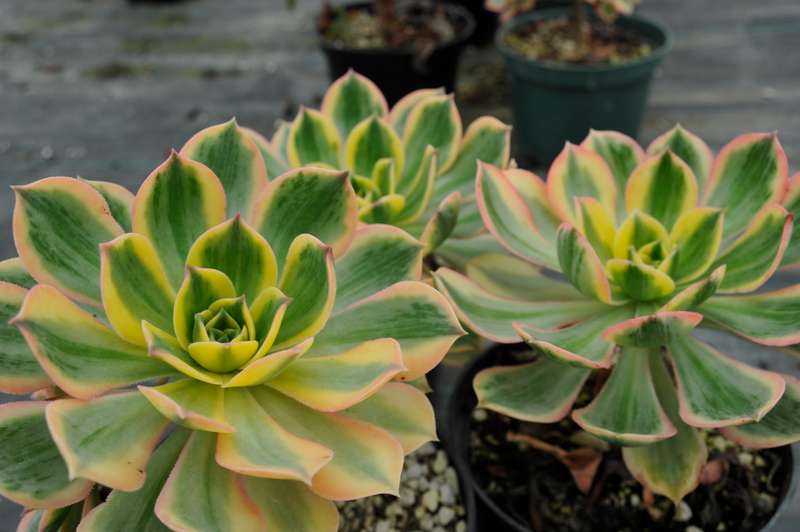
Sunburst Aeonium brings a lively burst of color with its variegated yellow and green leaves that radiate in a rosette formation. Full of personality, this plant shines best in bright light, enhancing its vibrant coloration. Sunburst Aeonium is relatively low-maintenance but requires well-draining soil.
When caring for this succulent, let the soil dry between watering sessions, particularly during winter months. Its cheerful pigmentation and carefree nature can bring joy to any terrarium layout while complementing other succulents beautifully.
Jade Plant (Crassula ovata)
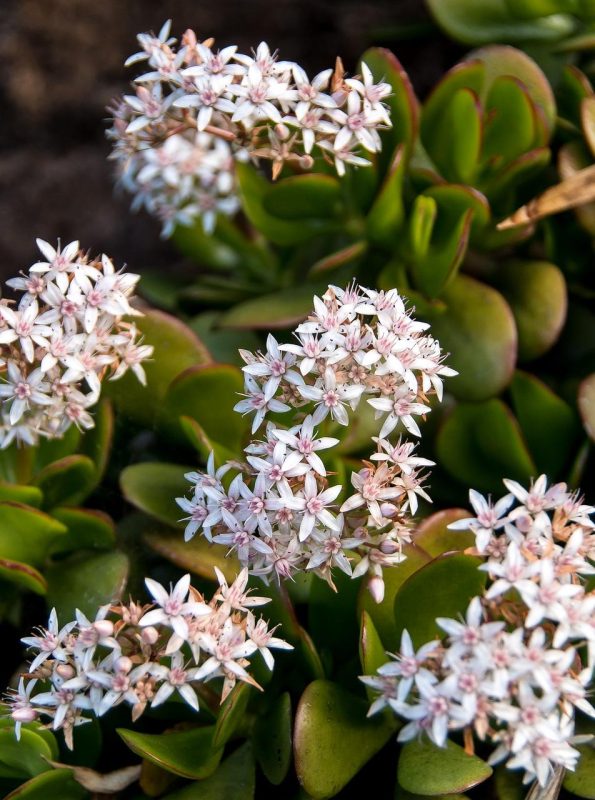
A classic favorite, the Jade Plant is known for its thick, glossy leaves and a robust structure. This succulent can grow quite large but is relatively manageable in terrarium setups when kept pruned. Crassula ovata is believed to attract good fortune, making it a meaningful addition to home decor.
The Jade Plant prefers bright, indirect light and should be watered when the top inch of soil is dry. Its ability to thrive with minimal attention makes it an excellent option for anyone looking to include statement plants in their terrariums.
Echeveria minima
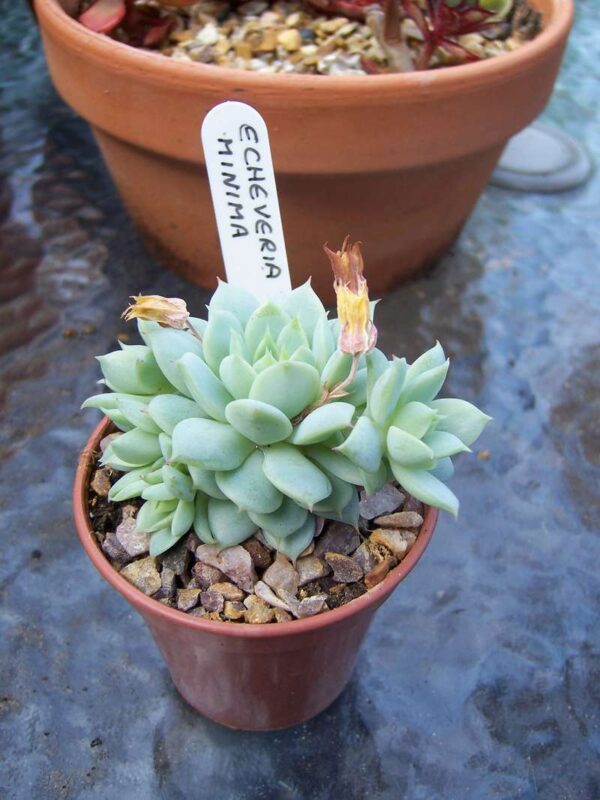
Echeveria minima is a delightfully petite succulent, perfect for terrarium spaces that require smaller plant options. With tight rosettes and subtle pastel colors, its charm lies in its diminutive size yet striking beauty. It prefers bright, indirect sunlight and well-draining soil.
As a low-maintenance plant, Echeveria minima requires minimal watering, allowing the plant to dry out in between. This sweet succulent will navigate effortlessly through your terrarium design, contributing a soft touch to the overall composition.
Echeveria setosa
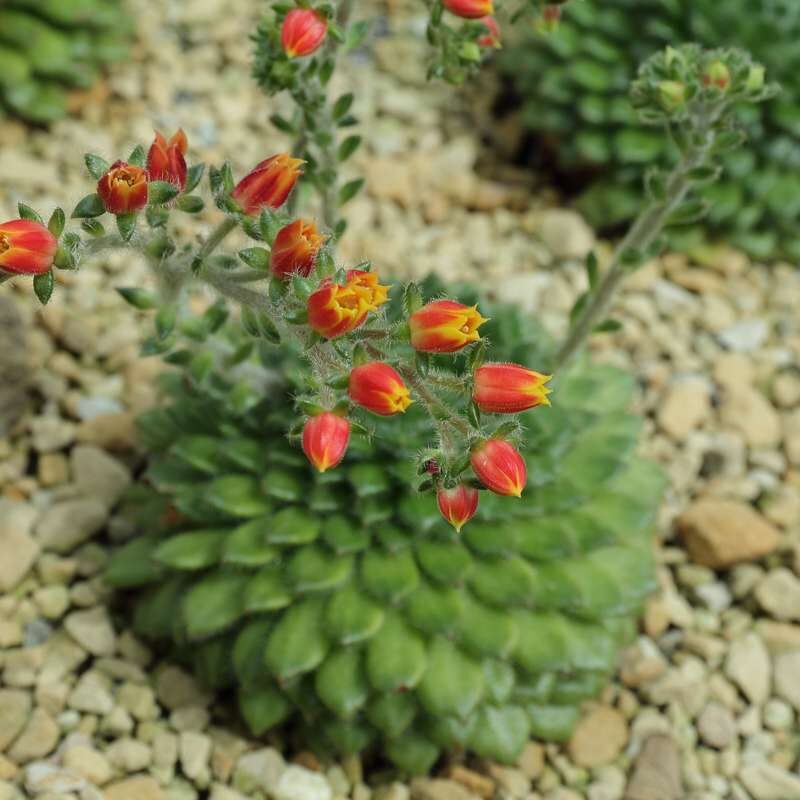
Echeveria setosa, also known as the Woolly Rose, boasts fuzzy leaves covered with fine hairs that provide a unique texture. The rosettes can expand quite a bit, making them a peculiar but beautiful addition to terrariums. This succulent thrives in bright, indirect light and requires well-draining soil.
Water cautiously, allowing the soil to dry completely between waterings. Echeveria setosa’s distinctive appearance adds an element of warmth and intrigue to your terrarium, ultimately drawing the eye.
Aloinopsis luckhoffii

Aloinopsis luckhoffii is lesser-known but rich in charm, featuring unique, pebble-like leaves that cluster together. This succulent offers an attractive texture that can create a beautiful nod to the natural habitats of succulents.
It thrives in bright, indirect light and requires infrequent watering, making it perfect for terrariums. Aloinopsis luckhoffii can elevate the uniqueness of your miniature ecosystem, demonstrating that beauties come in various forms.
Ruby Glow Peperomia (Peperomia graveolens)

Ruby Glow Peperomia is a delightful option for terrarium designs, known for its lush, rounded leaves with vibrant crimson undersides. This mid-sized succulent can incorporate a beautiful pop of color among traditional succulents while thriving in indirect sunlight.
Watering is essential but should be done sparingly, allowing the soil to dry out slightly between sessions. Its charming aesthetic and minimal care make it a great addition to a terrarium while highlighting how diversity in color and form promotes a rich environment.
Crassula Jade Necklace
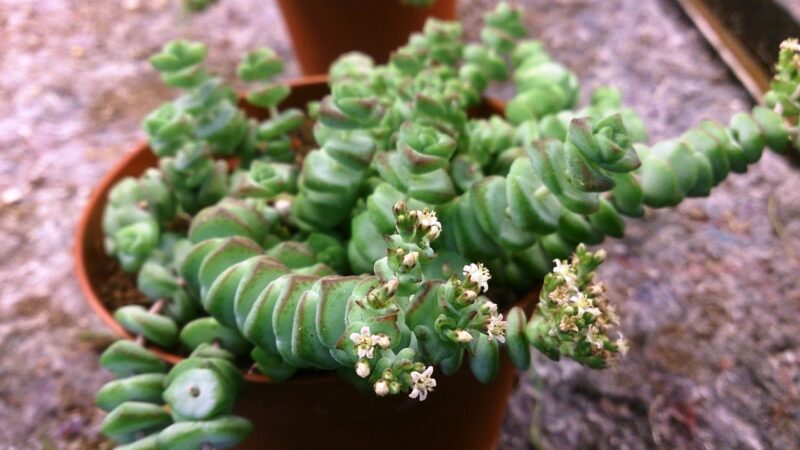
Crassula Jade Necklace, also known as Coral Plant, features cascading vines with small, rosette-shaped leaves that create a delicate and enchanting appearance. This trailing succulent would look lovely draping down the sides of a terrarium, creating a soft, lush environment.
It thrives in bright, indirect light and prefers well-draining soil to avoid overt saturation. This resilient plant stands out in any terrarium while enhancing the overall biodiversity of your ecosystem.
Ivory Towers (Crassula conjuncta)
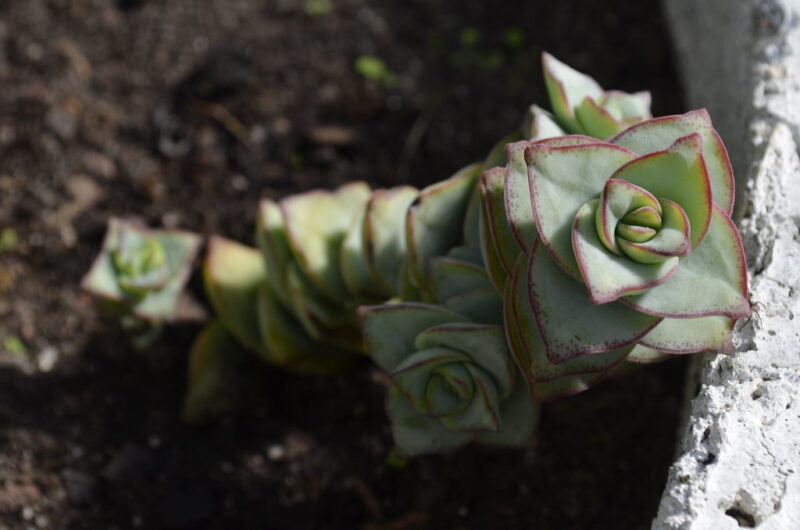
The Ivory Towers succulent stands tall with its distinctive upright growth habit and compact form. This variety showcases plump, ivory-white leaves that provide striking contrast against darker-toned succulents. They naturally grow in dense clumps, making them an excellent option for adding vertical elevation to your terrarium.
Providing well-draining soil and moderate indirect light helps maintain their beautiful coloration. The Ivory Towers succulent contributes an architectural element that adds depth and interest to your terrarium landscape.
Jelly Bean Plant (Sedum rubrotinctum)

The Jelly Bean Plant is a playful succulent known for its colorful, bean-shaped leaves that can change color based on light exposure and temperature. Its bright green leaves often develop red tips when given sufficient sunlight. This succulent is a treat for the senses and creates delightful visuals in terrariums.
Sedum rubrotinctum prefers bright, indirect light and well-draining soil. Regular but moderate watering helps maintain its health. Its charming nature brings joy to any terrarium, providing a rich texture and an accent of color that keeps your arrangement lively.
Spear-Head (Senecio kleiniiformis)
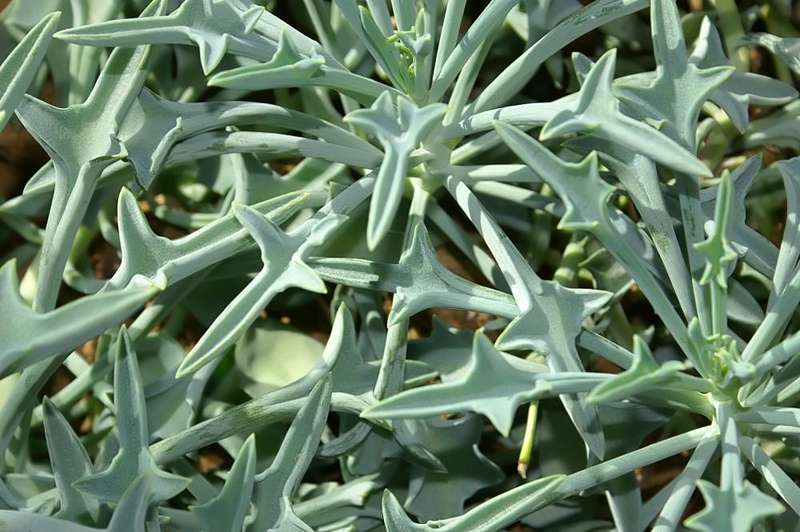
Spear-Head is an intriguing succulent characterized by its elongated, spear-like leaves. This distinctive morphology can add a sculptural element to your terrarium, creating eye-catching vertical interest. The plant generally thrives in bright sunlight and prefers to grow in well-draining soil.
Proper watering for Senecio kleiniiformis involves allowing the soil to dry out between sessions, preventing any possible rotting. Its unique shape makes it a standout, providing opportunities for structuring your plant arrangement in fascinating and imaginative ways.
Titanopsis (Titanopsis hugo-schlechteri)
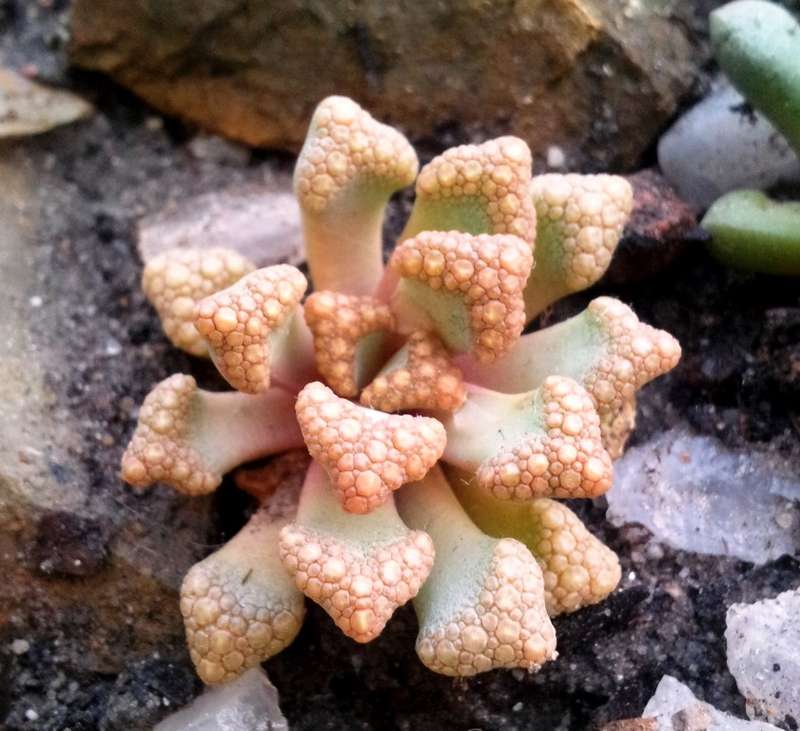
The Titanopsis plant is wonderfully adaptable and characterized by its unique, stone-like appearance. Its thick, clump-forming leaves display fascinating textures and subtle colors, which can flourish within terrarium environments. This succulent appreciates bright light and well-draining soils.
Water with caution by allowing the soil to dry between sessions, and let your Titanopsis thrive in a bright location. Its unusual form can introduce an innovative twist to your terrarium, highlighting the beauty of diversity among different species.
Campfire Crassula (Crassula capitella ‘Campfire’)

The Campfire Crassula features vibrant red and green leaves that form a compact rosette. Ideal for bright terrarium setups, this succulent brings energy and vibrancy to your arrangement. The contrast in color develops beautifully when exposed to sufficient sunlight.
Watering should be kept moderate, allowing the plant’s soil to dry out between waterings for the best results. The Campfire Crassula’s lively aesthetic makes it a favorite among succulent enthusiasts, ensuring it stands out within your carefully curated ecosystem.
Common Houseleek (Sempervivum tectorum)
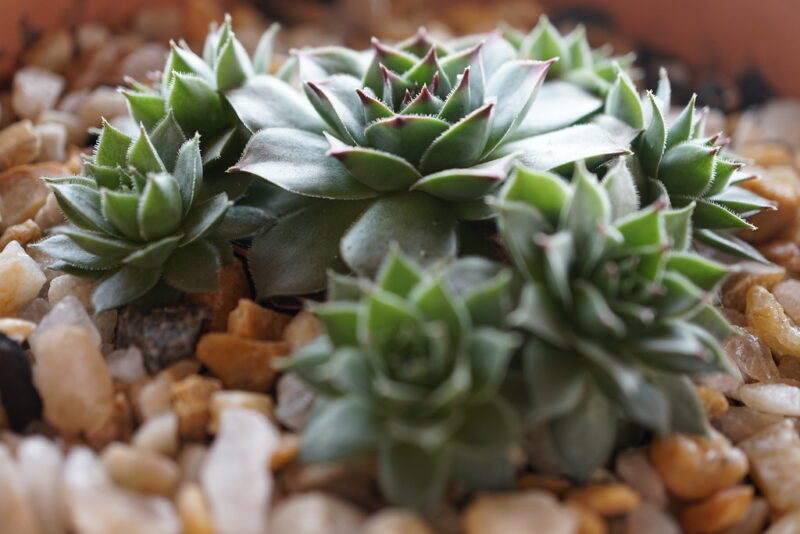
Common Houseleek, or Hens and Chicks, is a beloved succulent that forms rosettes and produces offsets, creating lovely clusters. This hardy plant thrives in a range of environments, making it an excellent choice for terrariums. Its lush green foliage can adapt to bright to partial light.
Water when the soil is dried out, ensuring proper drainage. This succulent’s ability to withstand various conditions makes it a reliable choice for your terrarium project, and the clustering growth habit adds to its visual appeal.
Echeveria melaco
Last but not least is Echeveria melaco, known for its unique, color-shifting leaves that can exhibit soft tones of green, pink, and purple. This succulent produces tightly packed rosettes, making it a visually striking option for any terrarium.
Like many Echeveria varieties, it thrives in bright, indirect light with well-draining soil. Water sparingly and allow the soil to dry out between cycles. Echeveria melaco will enhance the charm of your terrarium, contributing rich colors and textures to your indoor ecosystem.


